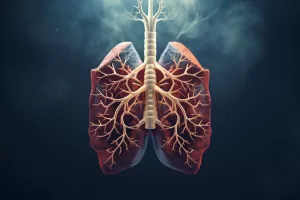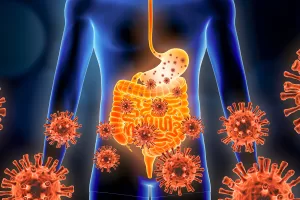Take advantage of this all-around infection prevention guide that will assist you in defending your health and decreasing the risk of infectious diseases. This article grants practical ideas on how to safeguard yourself and others at home and in public settings, creating a healthier and more secure environment for all.
What is Infection
Infection represents the invasion and multiplication of harmful microorganisms, for instance, bacteria, fungi, or viruses, within a host organism. It may result in diverse diseases and health complications, demanding prompt medical aid and treatment.
How Infections Spread
Infections may be distributed through the transmission of harmful pathogens, for example, fungi, bacteria, or viruses, from one person to another. General routes involve contact with infected individuals, droplet transmission, airborne transmission, contaminated surfaces, and vectors such as insects.
Contact transmission (direct and indirect)
Contact transmission includes the distribution of infections through direct touch with an infected individual or contact with contaminated objects or surfaces they have touched. Thus, pathogens are transferred effortlessly, highlighting the significance of handwashing, sanitization, and shunning contact with infected individuals or objects.
Droplet transmission
Droplet transmission happens when infectious pathogens move through respiratory droplets expelled during sneezing, coughing, or even talking. Tight contact with an infected individual or inhaling droplets may result in infection. Wearing masks, supporting distance, and proper respiratory hygiene are essential in preventing its distribution.
Airborne transmission
Airborne transmission is connected with the spread of infectious agents suspended in the air over longer distances and time. These small particles may be inhaled with ease, resulting in infection. Measles and tuberculosis are well-known examples of diseases with airborne transmission.
Common Types of Infections
Every year, a lot of individuals experience various types of infections. General types of infections involve respiratory infections such as the common cold and flu, gastrointestinal infections like food poisoning, skin infections such as cellulitis, urinary tract infections, bacterial infections, viral infections, fungal infections, and parasitic infections. Quick treatment and preventive measures are of decisive importance.
Bacterial infections
Bacterial infections arise as a result of invading harmful bacteria into the body. The general types involve strep throat, urinary tract infections, and bacterial pneumonia. Antibiotics are usually taken to treat bacterial infections, however, their reasonable use is crucial to prevent antibiotic resistance.
Viral infections
Viral infections occur as a result of invading viruses into the body’s cells. The most widespread types involve the common cold, COVID-19, and flu. Vaccines may assist in preventing some viral infections, while antiviral medications may facilitate symptoms in others.
Fungal infections
Fungal infections happen from the overgrowth of fungi in the body. The general types involve athlete’s foot, yeast infections, and ringworm. They commonly occur in warm and moist areas. Antifungal medications, proper hygiene, and maintaining the affected area dry are crucial for treatment and prevention.
Parasitic infections
Parasitic infections occur when parasites invade the host’s body and live at the expense of their resources. General types involve malaria, giardiasis, and lice infestations. These infections may be transmitted through contaminated food, water, or insect bites. Good sanitation and preventive measures are essential for control.
Role of the Immune System
The immune system performs an essential role in preventing infections by identifying and destroying harmful pathogens, particularly, bacteria and viruses. It employs a difficult network of cells and proteins to launch an immune response, defending the body from potential threats and supporting general health.
Principles of Infection Prevention
The principles of infection prevention are directed at controlling and limiting the distribution of infections. They include proper hand hygiene, utilization of personal protective equipment, isolation precautions, cleaning and disinfection, and vaccination, assisting in supporting a secure and healthy environment for all.
The importance of hygiene
The principles of infection prevention highlight the paramount significance of hygiene. Practicing proper handwashing, supporting personal hygiene, and following sanitation protocols perform an essential role in decreasing the transmission of pathogens and defending public health.
Hand hygiene
Hand hygiene is a fundamental facet of infection prevention principles. Regular and thorough handwashing with soap and water or hand sanitizers based on alcohol considerably decreases the risk of transmitting harmful pathogens, defending both individuals and communities from infectious diseases.
Respiratory hygiene
Respiratory hygiene is another important principle of infection prevention. Covering the mouth and nose when coughing or sneezing, utilizing tissues, and promptly disposing of them assist in preventing the distribution of respiratory infections, defending the health of individuals, and averting outbreaks in the community.
Food hygiene
Food hygiene is likewise a crucial facet of infection prevention principles. Proper handling, storage, and preparation of food may avert contamination and the transmission of foodborne illnesses. Compliance with food safety guidelines ensures secure consumption, contributing to general public health and well-being.
Use of Personal Protective Equipment (PPE)
The utilization of personal protective equipment (PPE) is a significant principle of infection prevention. Wearing masks, gloves, and other relevant PPE assists in defending healthcare workers and the general public from contact with infectious agents, decreasing the risk of transmission and ensuring security.
Types of PPE
The principles of infection prevention highlights utilizing diverse types of personal protective equipment, for instance, masks, gloves, goggles, and face shields. These items serve as barriers, defending against direct contact with infectious materials and decreasing the risk of transmission in different settings.
Proper use and disposal of PPE
The correct utilization and disposal of personal protective equipment are crucial in compliance with infection prevention principles. Proper methods of putting on and taking off, regular changes, and appropriate disposal avert cross-contamination, guaranteeing PPE remains effective in defending against infections and supporting a secure environment.
Vaccinations
Finally, vaccinations are an integral part of infection prevention principles. By stimulating the immune system to produce antibodies against definite pathogens, vaccines defend individuals from infectious diseases. Widely distributed vaccination programs promote herd immunity, decreasing the general transmission and impact of infectious agents in communities.
Infection Prevention at Home
Infection prevention at home includes compliance with proper hygiene rules, regularly disinfecting frequently touched surfaces, practicing frequent handwashing, and shunning tight contact with sick individuals. These measures assist in decreasing the distribution of germs and defending the health of everyone in the household.
Regular cleaning routines
Infection prevention at home through regular cleaning routines is of decisive importance. Cleaning frequently touched surfaces with disinfectants, washing hands frequently, and supporting a clean living environment assists in averting the distribution of germs and ensuring a healthier and more secure home for all residents.
Safe food handling and preparation
Infection prevention at home likewise involves secure food handling and preparation. Properly storing, cooking, and handling food assist in shunning foodborne illnesses. Regularly cleaning kitchen surfaces and cookware decreases the risk of contamination, guaranteeing a healthy and secure environment for the household.
Proper handling of sick family members
Finally, infection prevention at home includes proper handling of sick family members. Isolating them when possible, utilizing separate cookware and towels, and encouraging compliance with good hygiene rules assist in decreasing the distribution of infections within the household and contribute to more rapid recovery.
Infection Prevention in Public Settings
Infection prevention in public settings includes compliance with hygiene practices, in particular, handwashing, mask-wearing, and surface disinfection, to decrease the transmission of contagious diseases. These measures defend the health of individuals, contribute to community well-being, and hold back the distribution of infections in crowded environments.
Social distancing and mask wearing
Infection prevention in public settings depends on important measures such as social distancing and mask-wearing. These practices hold back the distribution of contagious diseases, defending individuals and communities from infections and contributing to a more secure public environment.
Awareness of high-touch surfaces
Also, infection prevention in public settings includes enhancing awareness about frequently touched surfaces such as doorknobs, handrails, and elevator buttons. Regular disinfection and hand hygiene in response to these points of contact assist in decreasing the transmission of infections and creating a healthier environment for everyone.
Hygiene practices when using public transportation and facilities
Finally, infection prevention in public settings involves compliance with strict hygiene practices when utilizing public transportation and facilities. Regular handwashing, wearing masks, and shunning touching one’s face assist in defending against contagious diseases, creating a more secure environment for all commuters and visitors.
How to Prevent Yeast Infection
To prevent yeast infections, it is advisable to follow good hygiene, wear breathable cotton underwear, shun douching and scented products, practice secure sex, and stick to a balanced diet. Ask for medical aid if you experience recurrent or persistent symptoms.
How to Prevent Infection after Sex
To prevent infection after sex, it is recommended to follow good genital hygiene, urinate after intercourse to flush out bacteria and practice secure sex by utilizing condoms and dental dams. In addition, regular STI testing and open communications with partners are of paramount importance for general sexual health.
How to Prevent Tattoo Infection
To prevent tattoo infections, you should follow definite steps. First, your task is to select a reputable tattoo artist and shop. After that, make sure of proper sterilization of equipment. Then, you should follow aftercare instructions strictly. Keep the tattooed area clean and dry. Finally, shun scratching or picking at the tattoo.
Summary
To sum up, infection prevention is of paramount importance for public health protection and decreasing the distribution of diseases. By complying with the above-discussed infection prevention principles, particularly, proper hygiene practices, getting vaccinated, keeping social distance, wearing masks, properly handling food, and applying effective infection control measures, individuals may collectively decrease the risk of infections and develop a healthier and more secure environment for all.
FAQ
What is the best way of preventing infection in a healthcare setting?
Proper hand washing is the best way to prevent the distribution of infection in a healthcare setting.
What are the CDC guidelines for preventing infection?
The general CDC guidelines for preventing infection involve practicing hand hygiene, wearing a high-quality mask, keeping your distance, getting vaccinated, ensuring good ventilation in indoor spaces, staying home when sick, etc.
What are three 3 ways to prevent infection?
As a rule, three effective ways to prevent infection involve regularly washing your hands with soap and water for a minimum of 20 seconds, getting vaccinated, and covering your mouth and nose with a tissue or your elbow when coughing or sneezing.






